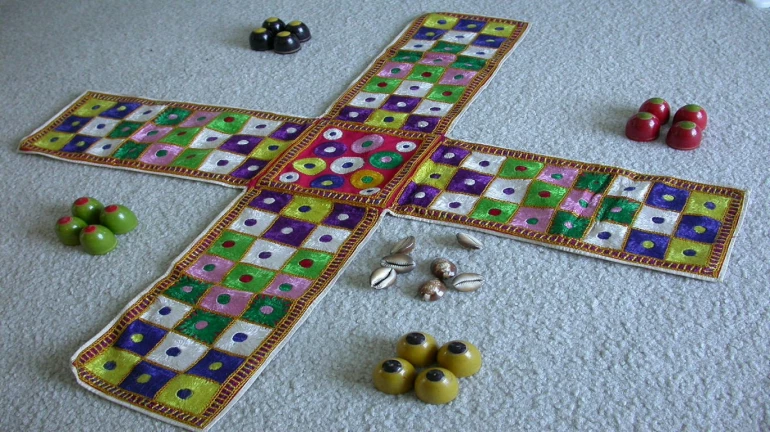
Until now, I had never imagined that games we play in our day-to-day lives have historical importance. For starters — Ludo — which we play on our smartphones, was initially played during the Mahabharat era. Shocker No. 2, Mokshapatam game, which is today’s Snakes & Ladders, was nothing but a religious game. Teachers tried and inculcated values in children with the help of this game. Apart from these board games, Lagori and Viti Dandu (field games) are of Indian origin, as well.
Well, to throw more light on this, Centre for Extra-Mural Studies (CEMS), Mumbai University and INSTUCEN Trust Mega-Exhibition of Archaeology and Geology's 2017 edition newly introduced a section called ‘Ancient Indian Games’ at Mumbai University.
This year's edition will let you experience the games on June 16-17 from 11:00 am to 6:00 pm at the same venue! There is no entry fee, but one has to pay ₹50 per head per game.
Raamesh Raghavan, a student of Centre for Extra-Mural Studies (CEMS), Mumbai University, has informed us that the ancient games mentioned are exactly the same to the modern day games that the kids are familiar with.
To add to the sizzle, there will be two field games at the event, i.e. Lagori and Vithi Dandu (both of Indian origin) which are loved across the country and are quite famous among people.
The real challenge for the CEMS team was to curate the information about all the ancient board games and to present it under one roof as a lot of games were etched on the wall and floor of the temples.
Here, CEMS student Dnyaneshwari Kamat put in special efforts and made several board games for an exhibition.
Initially, we researched and also found books with references to such games, searched on the internet and spoke to the older generation as well. I had a game in my house which belonged to my husband's grandmother. We replicated those games. We ordered Pachisi game online but the board was not in a condition to put on display. So, I decided to stitch one. It was a day's work and a presentable board was ready. Then I decided to paint other boards when I came across different versions of Ashta Chamma. Stitching the 'Waagh Bakari" board was really fun as it resembled our own ,'Godhadi' which we usually make for the newborn. Working together with people of different age groups and of different profiles was an unforgettable experience.”
It was during one of the field trips, Dr Radha Sinha, another student of CEMS, stumbled upon the idea of introducing ancient Indian games in the mega exhibition.
Last year, during one of our field trips, we were at Chalukyan temple in Upla village of Osamanabad where we saw this game etched on the wall. We wanted to know more about it and then there was no looking back,” says Sinha.
Dr. Mugdha Karnik, director, CEMS who has been the strong pillar, was more than happy to introduce ancient Indian games in the mega-exhibition.
So, since 2010-2011, we have been organising mega-exhibitions where archaeology and geology department came together. Last year, we introduced ancient game section where we had put a lot of board games on display. There, we received a lot of response. Initially, we had planned to set up these games for our students but then seeing the response, we decided to organise it on a large scale.”
1. Navakankari (Nine Men’s Morris) 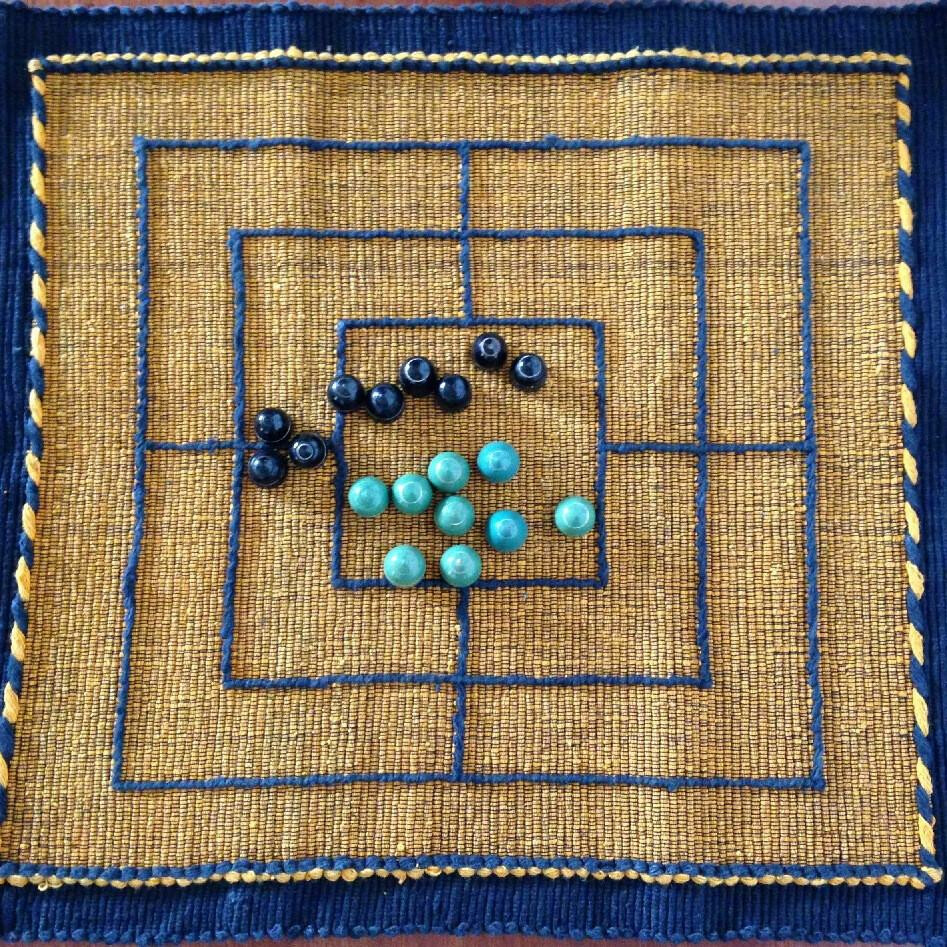
It came to India 2000 years ago with Indo-Roman trade and Roman sailors used to play the game. India later learned from them.
2. Chaturang 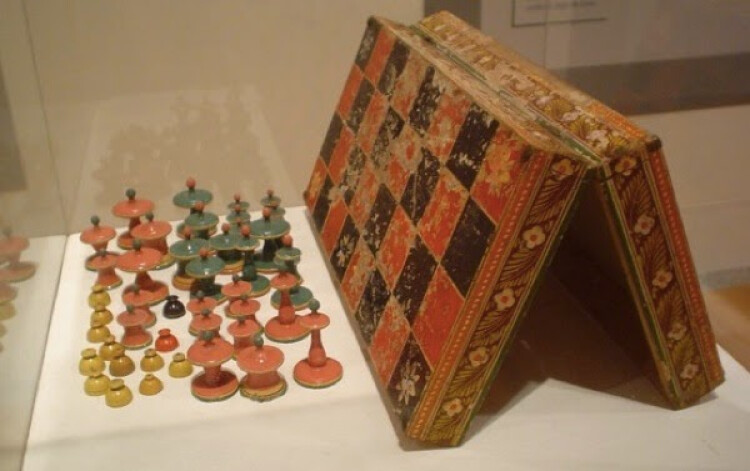
This means four parts of an army i.e. foot soldiers, camel, elephant, and horse. That game went to Persia and then went to Europe where it got its name- Chess. Origins of the Chess is in India. However, it is being said that the Chess game was originated in China.
3. Chaupar (Saripath, Chuapth)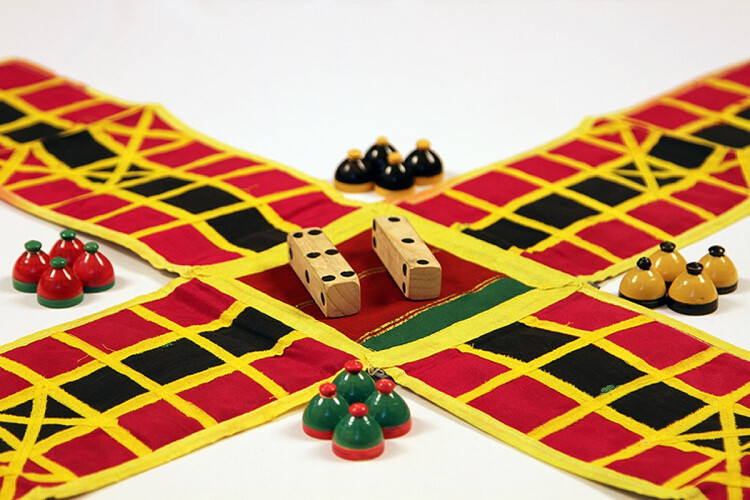
This game is played with long brass dices. Two dice, it will have 1,3,5,6 numbers on each dice. It was played in Mahabharat, where Yudhisthir lost to Shakuni mama, the central point of Mahabharata. This has also travelled across the world and now it is known as Ludo.
4. Mokshapatam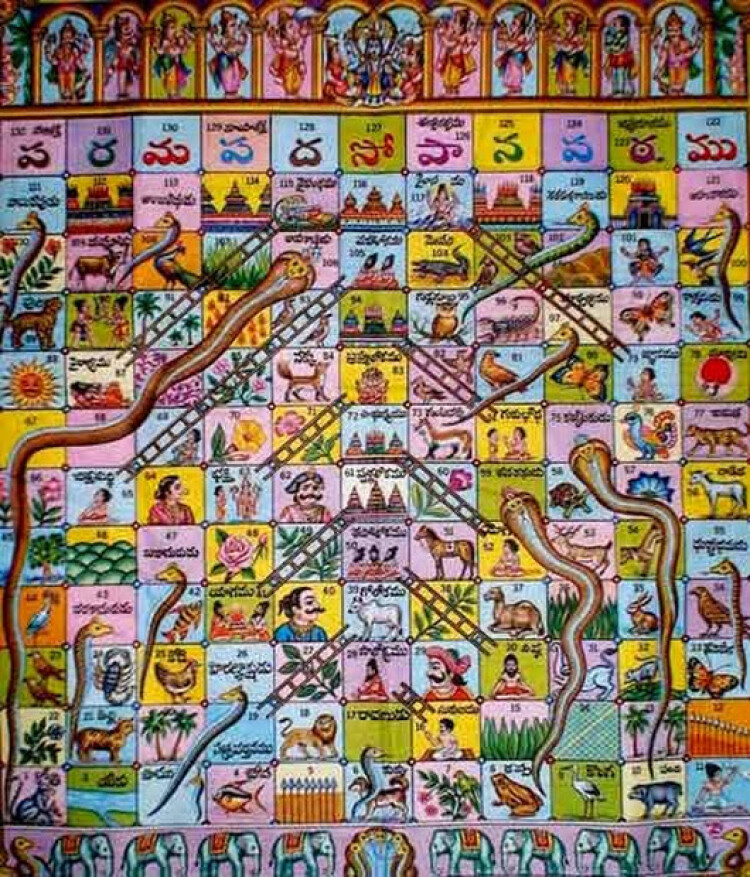
It is a Jain game with 84 squares and each square was marked with some values or a scene. And in some scenes, there was a snake. The game is played with dice and accordingly, you move your songti. If you end up on the snake, you slide down. Snakes and ladders was played as a religious game in ancient India to teach one values, dharam and adharam. Hence, it is also called as Gyanchaupat. Then Hindus adapted it and modified with 108 squares. In the Jain game, when you reach the top you get moksha (salvation) but in Hindu game, you get two options, you can go to Kailash or Vaikuntha. Then Muslims adapted the game. It replaced with Muslim values. So, if you offer namaz for five times, you climb the ladder and if take interest from somebody, you go down the snake and here one gets to choose Jannat at the end of the game. Christians of Europe then adopted the game to teach children Christian values. This game was taught by the seniors to teach students about values.
5. Ashtapada 
It is played with kaudi and songdya. There are eight square by eight square i.e total 54 squares. You start from one corner of the board and should reach the board’s centre. If you land on the square which is occupied with the opponent, you can cut it. He has to go back and start all over again. Such was the addiction, Bhagwaan Mahavir banned it and Buddha too banned this game.
So head to Mumbai University this weekend and experience all the historic games under one roof!
Date: June 16-17, 2018
Time: 11:00 am to 6:00 pm
Venue: Mumbai University
FREE ENTRY





